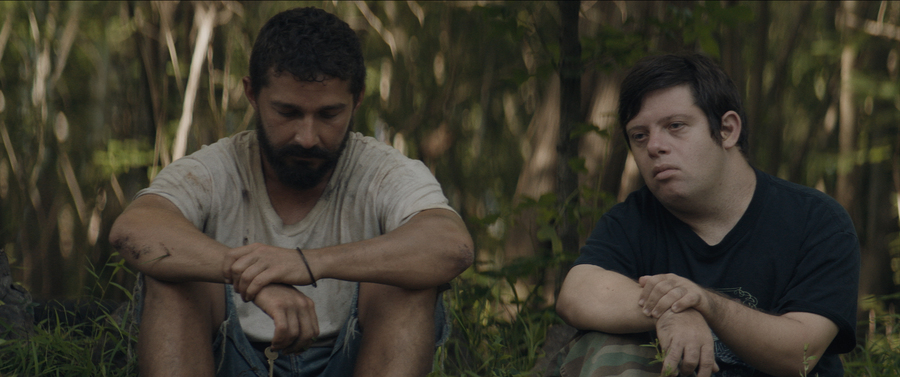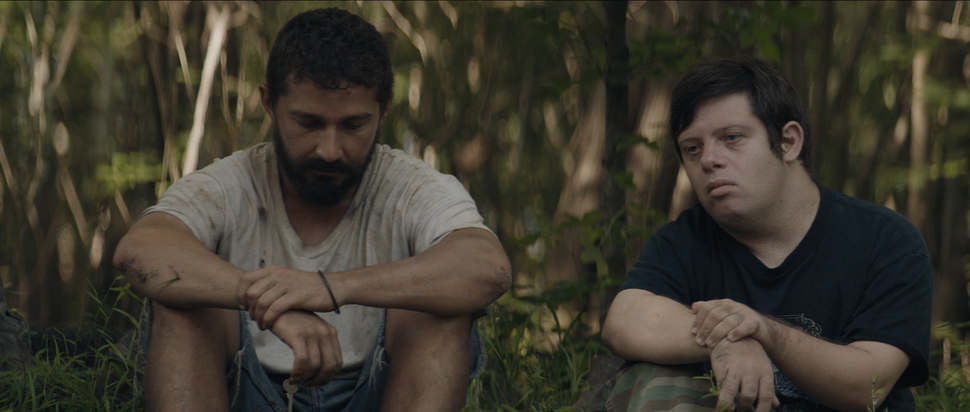The Peanut Butter Falcon: Meet the directors
Indie directors Michael Schwartz and Tyler Nilson discuss their breakout hit The Peanut Butter Falcon, a lyrical buddy movie about a young man with Down's syndrome taking to the road with a struggling fisherman, played by Shia LaBeouf
How far would you go to attend the wresting school of your dreams? For Zak (Zack Gottsagen), a man with Down’s syndrome in North Carolina, it means breaking out of his care home, teaming up with a similarly pursued ex-fisherman (Shia LaBeouf) and rafting his way through the backwaters of the state. Yet, the film’s destination is also the journey, a tour through swamps and shacks, dirt roads and riverbanks.
After making its own journey through TIFF and the BFI London Film Festival, The Peanut Butter Falcon arrives in UK cinemas this October. We spoke to directors Michael Schwartz and Tyler Nilson about their experience making the film.
The Skinny: What was it like directing the dynamic between Shia LaBeouf and Zack Gottsagen?
Michael Schwartz: We ran our set like sort of a therapy summer camp. So, everyone when they showed up on set, the first thing we did was get this old ’74 Ford Ranger Pickup, and had two dirty tyres in the back. Shia and Zack got in the back, each sat in the tyres, Tyler and I were up front, and we just drove up the coast for two hours to the shrimp dock location where we shot a bunch of the crabbing and boat stuff. The two of those guys just fell in love with each other very quickly. Our job was to create the space and the environment where being emotional and present was the cool thing to do, and then I think those guys gravitated towards it, and the whole rest of the cast, too. It was a really connected set.
It’s interesting you describe it like that because it felt like there was a lot of natural speech in the film. Was some of it improvised?
Tyler Nilson: Well, Mike and I are not word-perfect directors. We wrote the script as well as directing it, and there’s a lot of magic in really fantastic actors who come in and play jazz music on the dance floor a little bit. With Zack, our job wasn’t to keep him word-perfect; our job was to, again, create an opportunity to be reacting and be a fantastic actor. Memorising lines wasn’t gonna get us there. We knew when we were starting a scene, we knew when we were ending a scene. We just let those guys go in and put meat on the bones of the script. Of course, 95% of the stuff was written, but there’s a lot of little things that, in the edit, you can find magic in.
For example, “Rule number one is party!” was a line that Zack came up with off the cuff. That was a good example of Zack going left when we expected him to go right, and how well it worked, how connected Shia stayed with that when we kept going. The face-slapping scene – Mike was directing that scene specifically, and it came out of that environment where we’re allowed to play. Shooting films, I’m sure some directors are like, “This is the script, we’re shooting it exactly this way!” Mike and I go in and it’s a wonderful experience to go play with all your friends and to create. So that was just borne of… like, I think Mike and I are playful by nature. That was borne of that.

Shia LaBeouf and Zack Gottsagen in The Peanut Butter Falcon
There’s a lot more local colour, from around North Carolina, than I would have expected in a film like this. I wonder what the motivation behind that was.
MS: Tyler and I are really drawn to westerns and the way they capture a place. We like to say that there are five main characters in The Peanut Butter Falcon: Tyler, Zak, Eleanor [Dakota Johnson], the location and the music. We worked really hard to find these places and shot with big, anamorphic wides to show the marshes and the beaches. It was a goal of ours. We went and shot a proof of concept that had a lot of that style developed, and then, when we were able to get a cast and producers, everybody was on the same page.
I’m guessing that was the motivation behind the colour palette in the colour grade: blues, greys, pale greens, browns.
MS: Yeah! We were definitely leaning into a timeless quality so I think the colour grading felt, in its own way, dusty. When we were doing production design – Gabe Wilson, who did our production design and was incredible – our first piece of direction was, “Everything should feel like it might give ya tetanus.” Just rusty metal, loose nails and splintered wood. A lot of those colours were just present in the actual production design before we even got to the colour grading.
Now, I notice that the lead character names are Zak and Tyler... I have to ask: is this based on a true story?
TN: It was completely made up. We kept Tyler’s name because Shia asked. We were gonna change it for him. When we started writing this, Mike and I were, in Hollywood terms, nobodies. We didn’t have agents or managers. We were living in a tent in the woods in Los Angeles. We didn’t have famous friends, or friends who had famous friends. We were truly nobodies, and so we always thought, our goal was to raise about $20,000 and just shoot a really true indie film, with just a camera that we had.
I was gonna do the character of Tyler and Zack as the character of Zak. That’s kind of just as big as we could dream, and we couldn’t raise $20,000 to do it like that, so we went and shot a trailer for the film because that’s all we could afford to do. We went to my hometown, shot a five-minute proof-of-concept for the film, came back and started sending it to people. We realised that we hadn’t dreamed big enough, because then people saw that and they were like, “Oh my god this is amazing.” All of a sudden, we were like, “What if we got a real DP instead of Mike holding the camera? What if we got real actors instead of me doing it?” So that was why that name was Tyler, because realistically, we didn’t think we were gonna be able to do it as big as we did.
There’s quite a bit of Mark Twain in the story, what with rulebreakers heading down the river in the south. How much were you inspired by his writing?
MS: The tone of Mark Twain is something that’s embedded within Tyler and me, the feeling of classic literature and the composition. We didn’t want it to be a handheld indie; we wanted it to feel like classic Disney, or from a book. So Mark Twain was there, and I think there’s a lot of overlap with the humour and the issue-addressing. But then there’s also movies like Stand by Me and Mud. I think you’re influenced by everything you take in and like, and we leaned into that. The Mark Twain comparison gets the spotlight because it is so much raft, river and boats. The truth behind that is that’s where Tyler grew up. We knew that we could use boats for free. We couldn’t really afford permits in Los Angeles or anywhere else, and we knew we had friends who would help us for free. So we wrote it for there, to what we knew so it could be affordable.
It’s an interesting way of, instead of fighting against where you’re from and the budget that you have, just leaning into it.
MS: Yeah! Form-restricted creativity! It’s performance-enhancing sometimes!
The Peanut Butter Falcon is released by Signature Entertainment on 18 October and had its UK premiere at LFF
